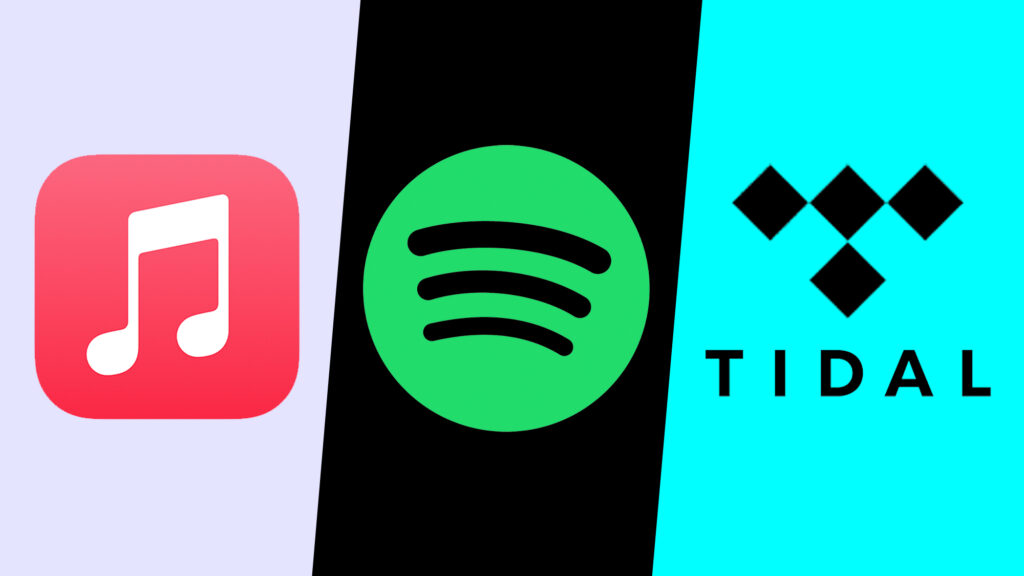
(Image credit: Tom’s Guide)
With a variety of streaming options to choose from, it is important to know what makes each one unique.
Nowadays music streaming services are the primary way people listen to music. In 2021 streaming passed radio as the most popular medium for music, cementing an era where the music industry is dominated by streaming services.
There are three big names in the music streaming market – Spotify, Apple Music and Tidal. Generally speaking, subscribers have the access to the same vast library of music regardless of which streaming service they choose. For some music listeners, however, the deciding factors for what service they choose depend on the variety of features that make each streaming service unique
Spotify, the world’s biggest music streaming platform, has clear advantages for finding new music. Spotify users often rave about the platform’s algorithm for recommendations, which includes its “Discover Weekly” playlist, updated every Monday with a personalized set of songs recommended for each user.
But when it comes to audio quality, some users agree Spotify has some technical downsides. How much that matters to you depends on how important you find audio quality to be.
One of the biggest deficits of Spotify is the absence of lossless audio, which, according to Gear Patrol, is an audio file in which “no detail has been destroyed in the compression process; the quality of the lossless file therefore depends on the original source that’s being compressed.”
On the other hand is “lossy” audio, commonly in an mp3 format, which is the only option on Spotify. These “lossy” audio files “have pointedly squished so they take up less storage space on your smartphone or digital music player,” according to Gear Patrol. “This squishing process is ‘lossy’; the end result is missing detail that the previous, un-squished version had, specifically at the low and high ends, so that it doesn’t sound nearly as good.”
Apple Music and Tidal both offer lossless audio options in addition to “lossy” audio. While the average consumer might not care enough about audio quality, audiophiles who swear upon lossless music listening seem to steer towards Apple Music and Tidal.
For Apple Music, you have the option to listen to lower resolution, compressed audio, but also lossless audio and additionally “hi-res” audio on certain releases. For Tidal, however, there is a “max” option, which means hi-res audio, in addition to lossless and compressed.
But Spotify has not been able to make lossless audio happen. In 2021, Spotify announced plans to add lossless streaming under the name “Spotify HiFi,” but three years later this has yet to be implemented. Spotify does offer options for various degrees of compressed audio, aka an MP3 format.
Max Coscio, a 2023 UMN graduate and audio enthusiast, has migrated to Apple Music after using Spotify. His reasons, however, are less motivated by audio quality than and more by the overall user interface.
“Compared to Spotify, Apple Music offers a lot more features that give you more ownership over your streaming library. You can organize your library in ways you can’t with Spotify,” Coscio said. “Spotify makes this process a lot more difficult, which makes it seem punishing to integrate music that artists choose not to put on Spotify into your Spotify library.”
Coscio does say he misses Spotify’s recommendation algorithm. “I used to discover a lot more artists I never would have even considered due to Spotify’s excellent ‘Discover Weekly’ features. I used to listen to a lot more individual singles because of this too,” Coscio said.
While Coscio uses the lossless audio feature that Apple Music has, he doesn’t worry about the audio compromises of Spotify. The compressed audio options are satisfactory, he said.
“I enjoy having the option for lossless when I’m on my desktop, but I personally do not hear enough of a difference between high quality MP3 and lossless in my casual listening experience,” Coscio said. “I think that to the average person, audio quality should not be a deciding factor over things that let people discover and listen to more music.”
If discovering new music is a priority for you, Spotify seems to be a fitting option, given the satisfaction users have with the algorithm. However, if you care more about artists getting paid for their work, Apple Music reportedly pays nearly twice as much per stream as Spotify does.
Lief Johnson, a 21-year-old electronic musician, uses Spotify because of its affordable student discount, but says that Apple has the upperhand on paying artists more fairly.
“I think that artists should be paid more, and I feel like that’s where Apple excels because they actually pay a cent instead of fractions of a cent,” Johnson said. “I feel like it could be more, but I do understand that rates such as, say, 10 cents a stream just aren’t feasible.”
Of the major streaming services there are a few key features that will matter to different consumers – quality of music recommendations, audio quality and payments for the artists. For consumers who care both about audio quality and artists getting paid more per stream, Apple Music or Tidal seem to be the more sensible options. As for those who don’t care as much about those qualities and are more concerned with an affordable streaming service that will help them discover new music, Spotify fills those needs as well.
There is no objective “best” music streaming service, but there are services that will meet different consumer wants and needs accordingly. Before you commit to a streaming service, it’s worth taking a look at what sets it apart from the others to see if it is right for you.